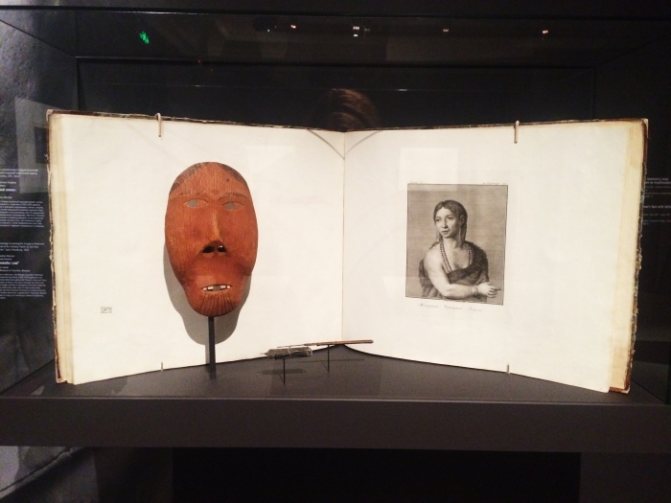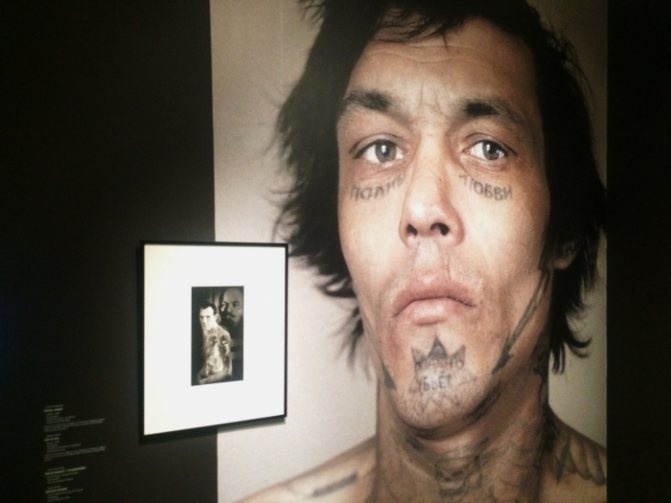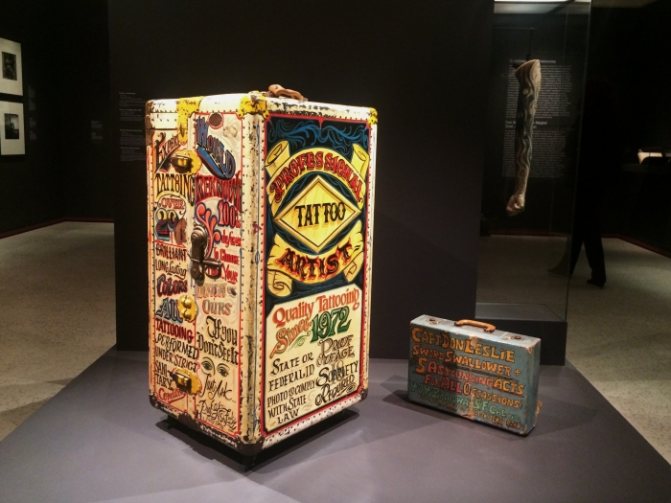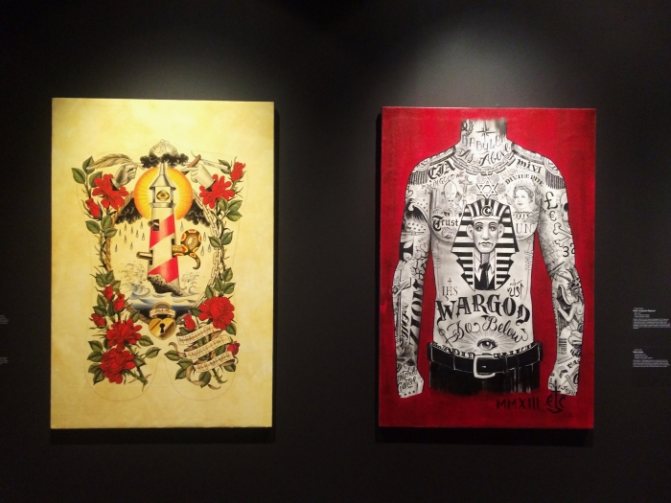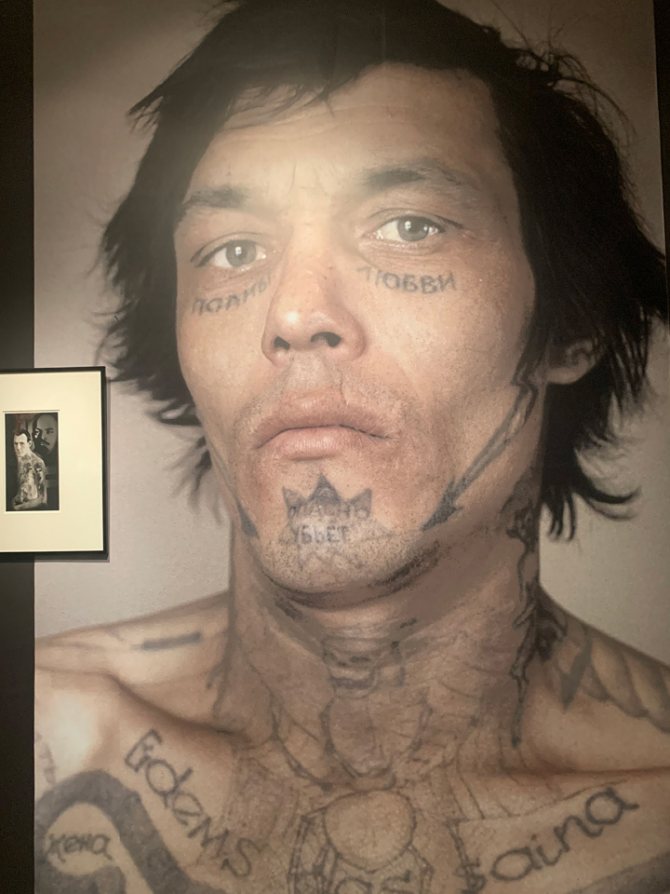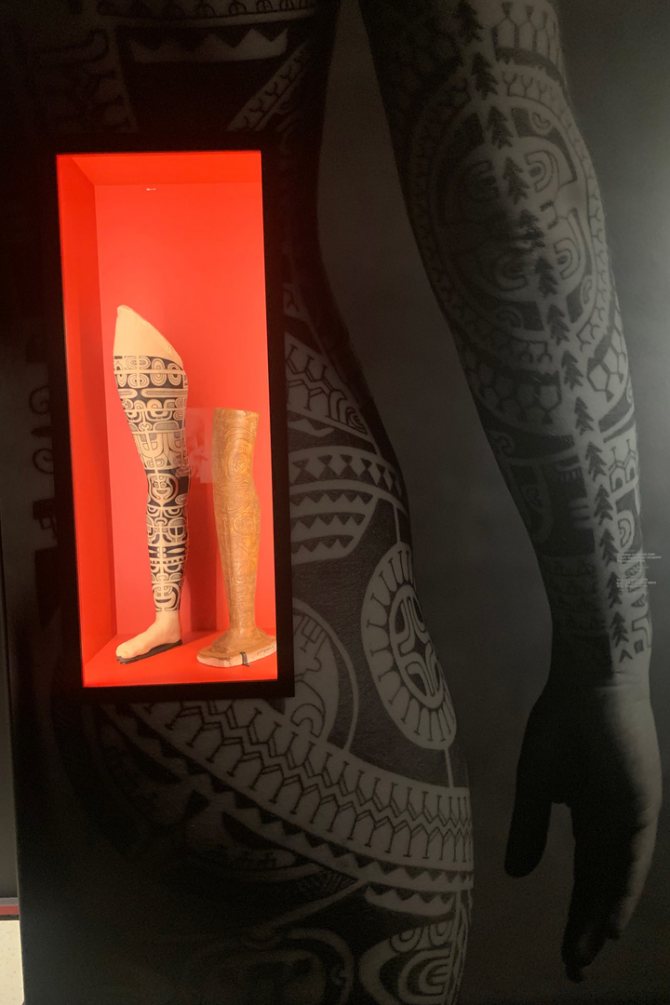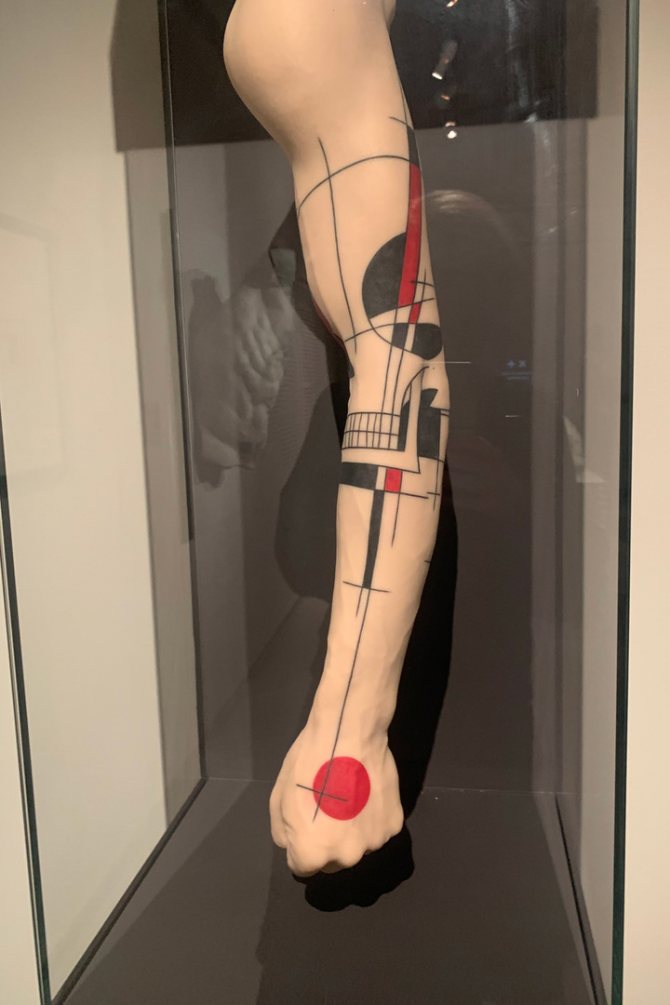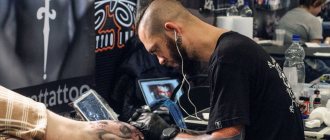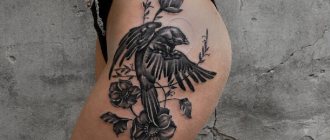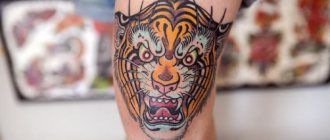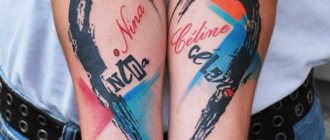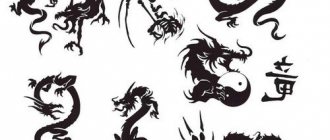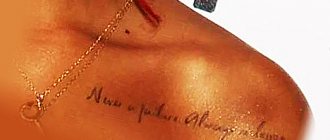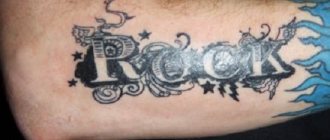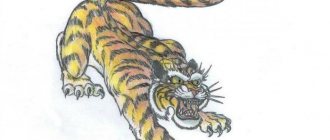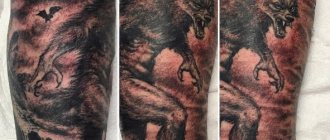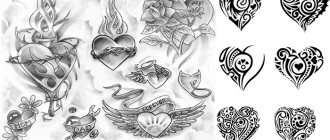The exhibition "TATU", which tells about the stages of development of tattooing in different regions of the world, takes place in the Pushkin State Museum of Fine Arts from March 3 to September 27, 2021. The work of the tattoo artists will be shown on three-dimensional silicone models - casts of body parts of real people. The exhibition tells about the phenomenon of tattooing in the broad context of the cultural history of civilizations. The Gallery of European and American Art of the 19th-20th centuries will present both traditional art objects and works by modern artists to Moscow citizens and guests.
Photo: Gallery of European and American Art, address - 14 Volkhonka Str., Moscow

Curated by Anne and Julien / HEY! Modern Art and Pop Culture explores the phenomena of mass, elitist and marginal culture and their mutual influence, dedicating various projects to them.
The exhibition will include about 200 works large-scale chronological and geographical coverage, revealing the history of tattooing.
Earlier the project was successfully presented in different museums of the world (Jacques Chirac Quai Branly Museum, Ontario Royal Museum, Fields Museum of Natural History, Los Angeles Museum of Natural History, the Kaohsiung Museum of Fine Arts).
The exhibition in Moscow will be supplemented with the objects of decorative-applied and fine art from the Russian museums and private collections.
History of tattooing
Archaeological finds prove that the custom of tattooing goes back to ancient times. Some of the earliest examples are already represented by the ancient Egyptian civilization.
A special section of the exhibition will be devoted to A special section of the exhibition will be devoted to the tattoos of the indigenous peoples of OceaniaA special section of the exhibition will be devoted to the tattoo of the indigenous peoples of Oceania, where this tradition existed and evolved over the centuries until the arrival of Europeans in the mid-19th century, having achieved an incredible complexity of content and form. The pattern or ornament of the tattoo as well as zone of application to the body were chosen depending on sex of the person, social status, stage of life. The modern page of tattoo development on the Marquesas Islands will also be presented at the TATU exhibition.
Tattooing was especially developed in Japan.. The Ainu people of Hokkaido were characterized by ribbon-like tattoos around the lips, on the forearms and on the back of the hand. The tattoo was an element of an initiation rite. This tradition reached its peak in Japan during the Edo period (1603-1868). In the seventeenth century, tattoos were worn mainly by men who usually worked with a bare torso: construction workers, fishermen, etc. For the upper class, such as warriors, body painting was considered unworthy of adornment. In addition, during the Edo period, tattooing was used to punish criminals who had their face and arms tattooed, the visible parts of the body.


Despite the fact that tattooing in Japan was only practiced in certain social strata, it took the unique form of large figurative works covering large areas of skin. By the first third of the 19th century, professional tattoo artists appeared in Japan, and their works were inspired by ukiyo-e prints. The tattoos covering the whole body emerged under the influence of ukiyo-e artists, whose prints will also be on display at the exhibition.


Several sections are devoted to the tattoo phenomenon in Europe and America. If we talk about the European tradition, then in Ancient Greece and Ancient Rome tattoos were used as a punishment: they branded the defeated enemies. The Roman Empire branded slaves, gladiators and early Christians. The ancient oikumene, however, was populated by ethnic groups where the tattoo served opposite purposes: the Picts, Celts and Britons had it as a badge of honor, a sign of high birth.
Body as Evidence: A Guide to the Tattoo Exhibition at the Pushkin Museum of Fine Arts
Exhibitions
September 23, 2020
Alexander Savenkova
Pushkin Museum of Fine Arts | exhibition is open till September 27
В Pushkin State Museum of Fine Arts is an exhibition project "Tatu"The project is organized jointly with the Parisian Museum on the Quai Branly named after Jacques Chirac. The exhibition, dedicated to the art of tattooing, includes about 200 works of large-scale chronological and geographical scope, revealing the history of this phenomenon.
You can see the exhibition at the Pushkin State Museum of Fine Arts until September 27, and in the rubric "Excursion for Reading". art magazine Tochka ART together with Alexandra Savenkova, a leading specialist in exhibition and exhibition activities, introduces readers to its most interesting exhibits.
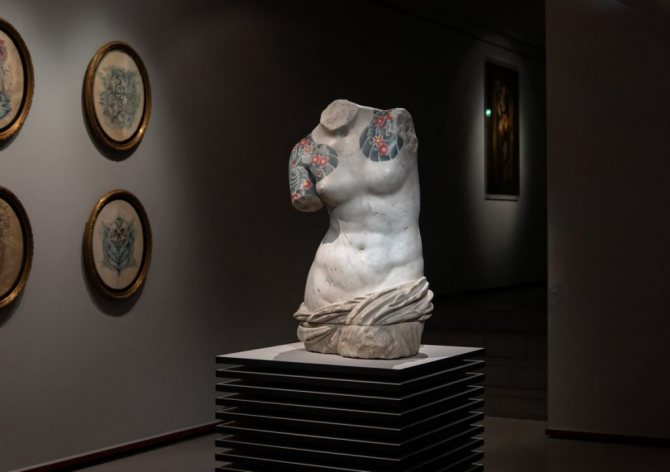

Fabio Viale's "Venus. Italy, 2021. Collection of the author, Turin. © Pushkin State Museum of Fine Arts.
Having evolved from a traditional bodily practice to an integral part of contemporary visual culture, tattooing has long deserved museum reflection. Presenting more than 3,000 years of history of one of the most ancient practices of body modification, the exhibition-study at the Pushkin State Museum of Fine Arts in Turin. Pushkin talks about the diversity of tattoo forms and functions, their transformation under the influence of various circumstances and the importance of tattoos in contemporary culture.
Tattoo is one of the oldest traditions, even in Ancient Egypt people covered their bodies with drawings. In 2021, in the collection of the British Museum, researchers discovered mummies from the pre-dynastic period, which were more than 5,000 years old. Tattoos were also found on these mummies. They were not visible to the naked eye because the mummies' skin had darkened during embalming and the tattoos became visible under infrared light. A few years earlier, in 2021, French archaeologists discovered a priestess mummy in a necropolis in New Delhi, also covered with tattoos and magical symbols.
A masterpiece from an ancient Egyptian collection
One of the oldest exhibits at the exhibition is the famous "Spoon in the shape of a floating girl with a lotus flower" made of ivory and ebony in the shape of a floating girl with a lotus flower from the New Kingdom period (14th century B.C.). The work is among the most skillful, almost mesmerizingly beautiful examples of its kind.
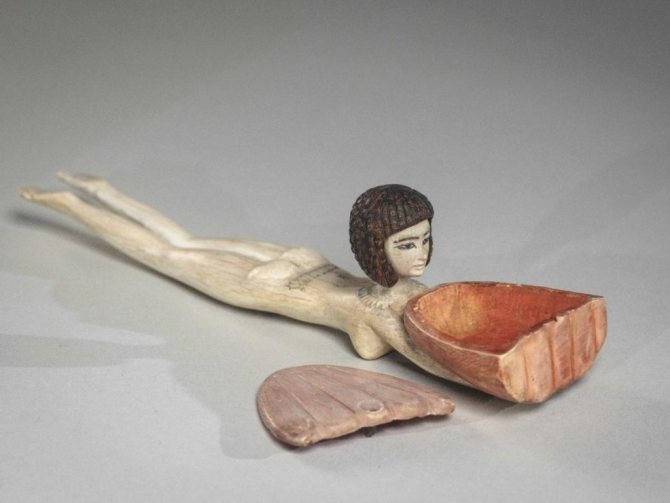

Cosmetic spoon in the form of a floating girl. New Kingdom, 18th-19th dynasties, 1550-1185 BC. © Pushkin State Museum of Fine Arts
For a long time it was thought that the noble Egyptians kept cosmetics in such spoons, but it is possible that they were used in the cultic realm - during the rituals of sacrifice.
On the girl's waist are engraved papyrus in a row, on both sides of which are images, probably of antelope. These images are characteristic of the New Kingdom era spoons and were symbols of creation, fertility and eternal life. Usually the ornament on the spoon is interpreted as a belt, but it does not continue on the girl's stomach. Therefore, it is likely that the "sash" on the Moscow spoon is a tattoo. The familiar to Russian spectators exhibit is presented in a new light: not many people know that on the outside of the girl's thighs are two more tattoos in the form of the god Bees - the patron saint of the home, who guarded over women and children. The image of the god was of a crooked-legged naked dwarf with a big head, wearing a tiara of feathers and a lion's mane or a lion's skin.
Oceania
There was an incredible variety of tattoo types and styles in the Oceania region. Of particular interest is the tattoo of New Zealand, the Maori people.
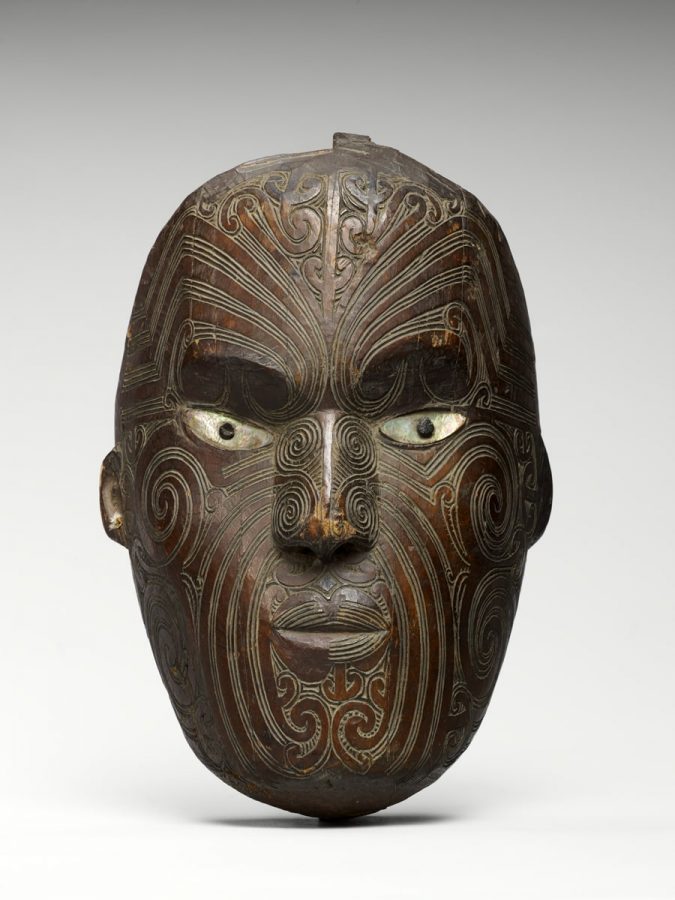

Koruru mask, or parata. XIX century. New Zealand. Wood carving and engraving; white pigment; pua shell (Haliotis iris). Jacques Chirac Quai Branly Museum, Paris © Pushkin State Museum of Fine Arts
The exhibition "Tattoo" shows two plaster masks taken from the living representatives of the Maori people - a man and a woman. The tattoo of these people was mainly located on the face and was applied in an interesting way: the masters were wood carvers, and the tools for tattooing resembled chisels. The pattern was first cut into the skin and then pigment was rubbed into it. The tattoo was three-dimensional.
For the Maori, a tattoo was a visible sign that its bearer was proud of his belonging to the tribe, the social status of the person. This people had a tradition of preserving tattooed heads of ancestors and significant people of the community. These heads were preserved by special fuming and kept in the community house. The exhibit "Koruru or Parata Mask" suggests that New Zealand tattooing was related to wood carving. Such masks were placed on the ridge of the communal house and served as a protective marker.
Marquesas Islands
The inhabitants of the Marquesas Islands had a particular style of tattooing, patu-tiki (meaning "to put images or figures on"). Historically, the tattoo was applied by piercing the flesh and served as a visual indicator of the status of its owner.
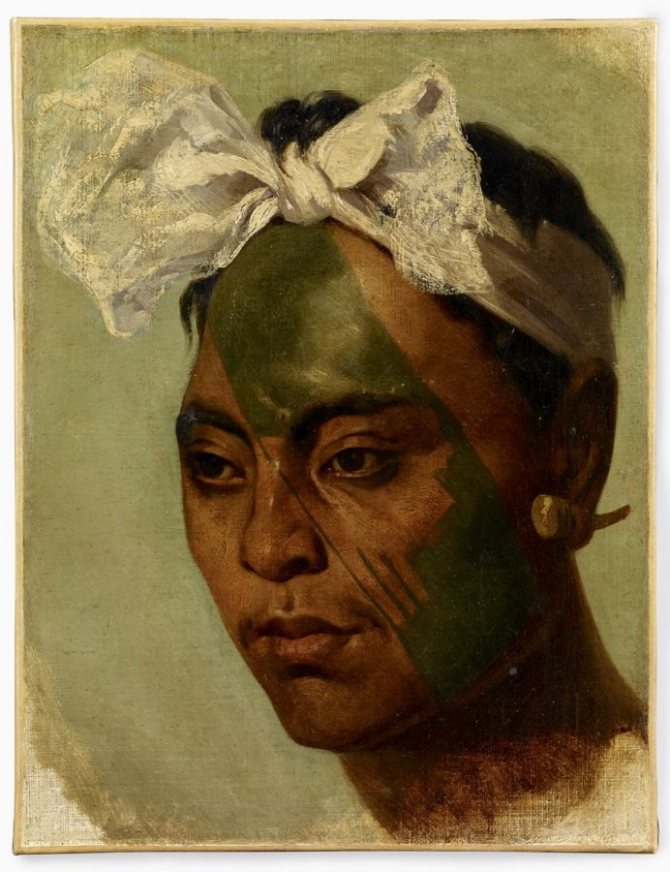

Unknown author, "Tattooed Marquesas Islander." The Marquesas Islands, Oceania. 19th century. Fragment. Oil on canvas. Museum on the Quai Branly of Jacques Chirac, Paris © Pushkin State Museum of Fine Arts
To become a tattooist, one had to go through a long and difficult apprenticeship. The master tattooist had the necessary knowledge to perform rites, mastered the technique of tattooing and acted in harmony with the gods. As a rule, the profession was handed down from father to son. The tattooists made their tools themselves, their appearance resembling a small chisel. The act of directly tattooing involved one or sometimes several assistants. Without their help, it was impossible to perform tattoos.
The importance of the tattooist's role was reflected in the nature of the remuneration: they were given cloth, mats, food, prestigious objects and weapons. The choice of motif was always the responsibility of the master and he used a repertoire of traditional iconography inherited from his predecessor, which could vary. Each tattooist had his own style and distinctive images (such as a valley or an island).
Japan
The tattoo was especially developed in Japan. For representatives of the people living in Hokkaido Ainu were characterized by resembling ribbons tattoo around the lips, on the forearms and back of the hand. The tattoo was an element of an initiation rite. The tradition reached its peak in Japan during the Edo period (1603-1868). In the 17th century, tattoos were mainly worn by men who usually worked with a naked torso: construction workers or fishermen. For the upper class, such as warriors, body painting was considered unworthy of adornment.


Toyohara Kunichika "Actors Ichikawa Sadanji I as Goheiji, Ichikawa Danjuro IX as Dancichi Kurobei, and Ichikawa Sadanji I as Isshun Tokubei (in cartouche) in the play Natsumatsuri ("Summer Festival"). Triptych, 1877. Color woodcut. Museum on the Quai Branly named after Jacques Chirac, Paris © Pushkin State Museum of Fine Arts.
In addition, during the Edo period, tattooing was used to punish criminals who had their face and arms tattooed, visible parts of the body. Despite the fact that tattooing in Japan was only practiced in certain social strata, it took the unique form of large figurative works covering large areas of skin. By the first third of the 19th century, professional tattoo artists had emerged in Japan and their work was inspired by ukiyo e prints. Tattoos covering the entire body were influenced by the ukiyo-e artists whose prints will also be on display.
Thailand
A tattoo in Thailand has a complex, magical and religious meaning. It crosses over currents of Buddhism, Hinduism and even animism. The patterns are magical talismans on the human body, serving a specific purpose. A significant role in the development of this practice was played by the arrival of Europeans in Southeast Asia in the early 17th century. Over time, the influence of Western mores led to a less benign attitude toward tattooing.
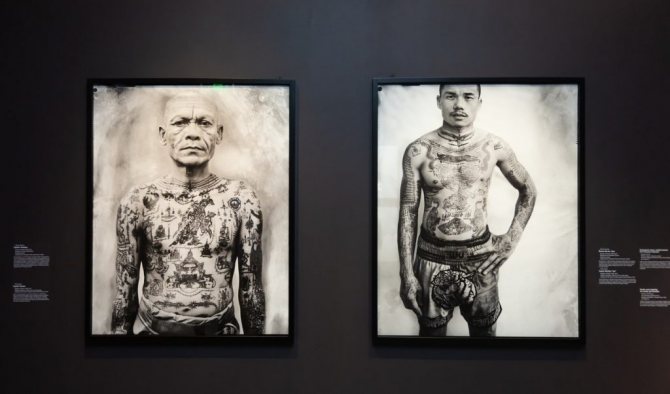

Cedric Arnold. Untitled. Close-up of a male tattoo on his arms and chest. / Muay Thai (Thai boxing) boxer. Bangkok, Thailand. 2008-2011. Olivier Waltman Gallery, Paris © Pushkin State Museum of Fine Arts
In the early 20th century a royal decree passed in Chiang Mai prescribed: women to cover their breasts and men to cover their tattoos. In the 1960s, most educated Thais living in cities could not even think of getting a tattoo. The tradition persisted in rural areas.
Europe and America
Several sections are devoted to the tattoo phenomenon in Europe and America. In Ancient Greece and Rome tattoos were used as punishment: they branded defeated enemies. In the Roman Empire they branded slaves, gladiators and early Christians. The ancient oikumene, however, was populated by nations where the tattoo served opposite purposes: the Picts, Celts and Britons had it as a sign of distinction, a sign of high origin.
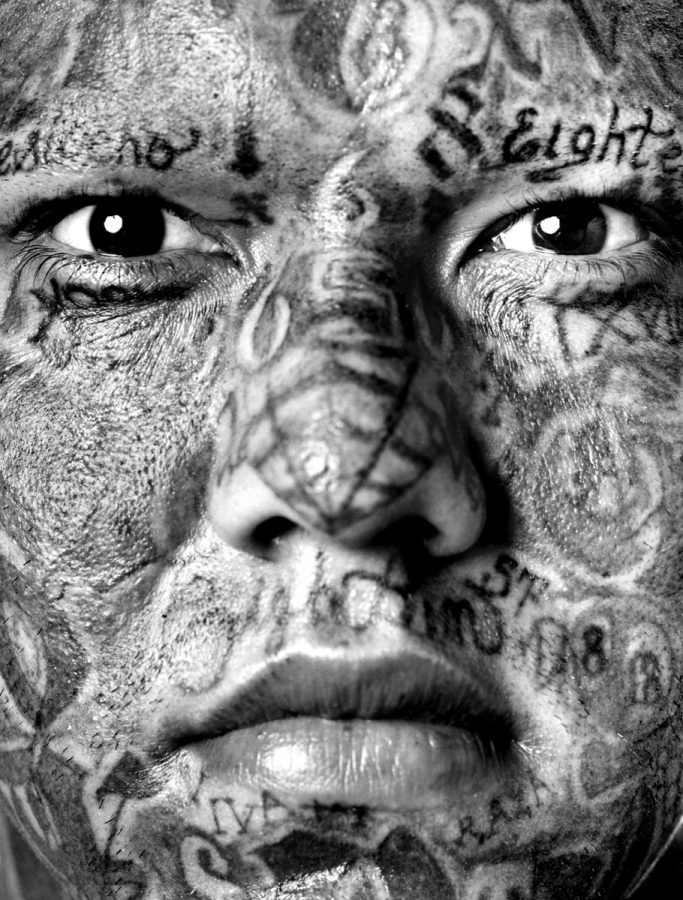

Isabel Muñoz "Portrait of a Mara gang member" from the Maras series, 2006. Photo from the author's collection, Madrid © Isabel Muñoz, 2020
As geographical boundaries expanded and distant lands were colonized, two parallel processes took place: the direct participants of sea voyages, getting acquainted with the tattoos of natives, applied the same as a memory, and the expedition leaders studied the body art as an ethnographic curiosity, making sketches and descriptions.
All North American Indian tribes, from the Inuit to the Cree, practiced the custom of tattooing, but with the arrival of European colonists their culture gradually closed off within the confines of reservations. With the end of colonization tattooing in the United States developed in isolation from the traditions of the indigenous population, inspired by European models, and by the first half of XX century graphic features of the American tattoo (bright colors, bold outlines) had already formed.
The affirmation of tattooing in the United States was mainly due to sailors and soldiers. Already in the 1870s the first tattoo salons opened in New York. In 1891 an electric tattooing machine was patented, which provided new technical possibilities and gave impetus to the development of a new style.
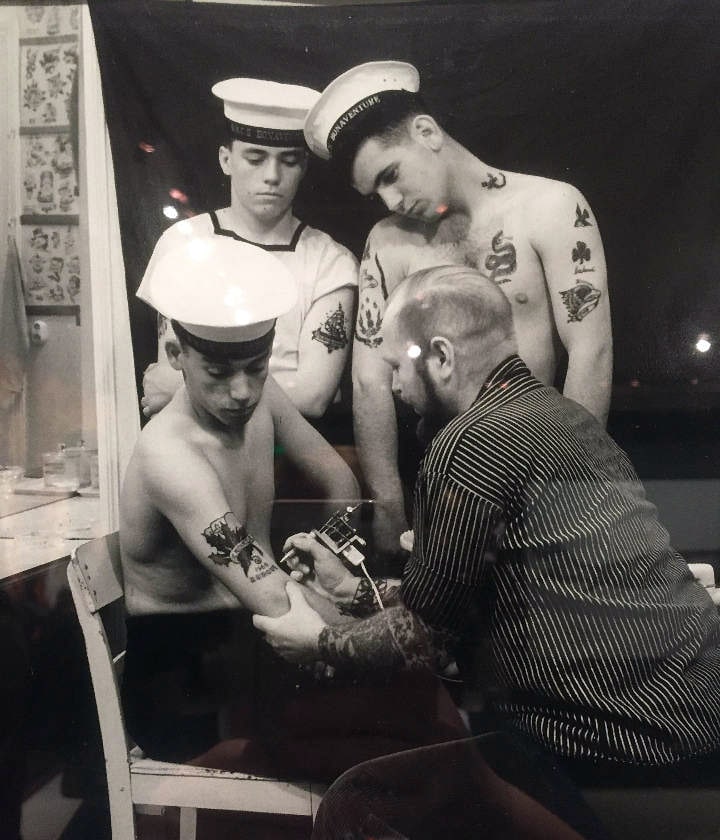

The twentieth century, body art as part of European and Russian culture. In Europe and the United States tattoos "came" from sailors who had been on long voyages © Pushkin State Museum of Fine Arts
Until the mid-20th century sailors, soldiers and circus performers remained the main tattoo bearers. But already in the 1960s there appears a new formation of tattoo artists, often with art education and positioning tattoo as art, as well as a new type of customer - the rebellious youth. The era of tattoo revival and its gradual emergence from the field of marginal culture begins.
Wandering tattoo artists
In European countries as early as the end of the 17th century travelers returning from the West Indies and other distant countries brought tattooed "savages" to show the public. On a wave of interest to live overseas curiosities dotted with drawings, men and women began to appear with a large number of tattoos, often of unknown origin, telling incredible stories about their tattoos. A common legend was the story of forcibly obtaining tattoos in captivity from the natives. These characters contributed to the rise in popularity of American circuses and fair shows, and some went on tours of Europe, where they aroused the interest of scientists, doctors, and anthropologists.


Tattoo Man's Suitcase. United States, 20th century. Collection of Henk Schiffmacher, Amsterdam © Pushkin State Museum of Fine Arts
Over time, fair show programs became traditional entertainment, and among their attractions they necessarily included a display of men and women abundantly covered with tattoos. In the 1870s, the world's most famous tattooed man was Captain Costentenus, an Albanian Greek discovered by Phineas Barnum, a major figure in nineteenth-century American show business. Captain Costentenus was one of Barnum's most bizarre "exhibits." He claimed to have been a prisoner of the Chinese Tartars in Burma and to have been subjected to three months of terrible torture while he was tattooed. Barnum represented Costentenus as "a wonder of wonders among mortals," a victim and hero who survived "more than seven million blood-letting injections." Costentenous' unprecedented success had a major impact on fairground revelry in the United States. Barnum is rumored to have paid him a thousand dollars a week.
Billings-Sarychev Expedition.
For most people, tattooing is associated with the southern regions of the earth, with the half-naked natives of the Pacific, and few know that a rich tradition of tattooing also existed among the peoples of the north. The exhibition features tattoos of northern peoples from Chukotka to Alaska and Greenland.
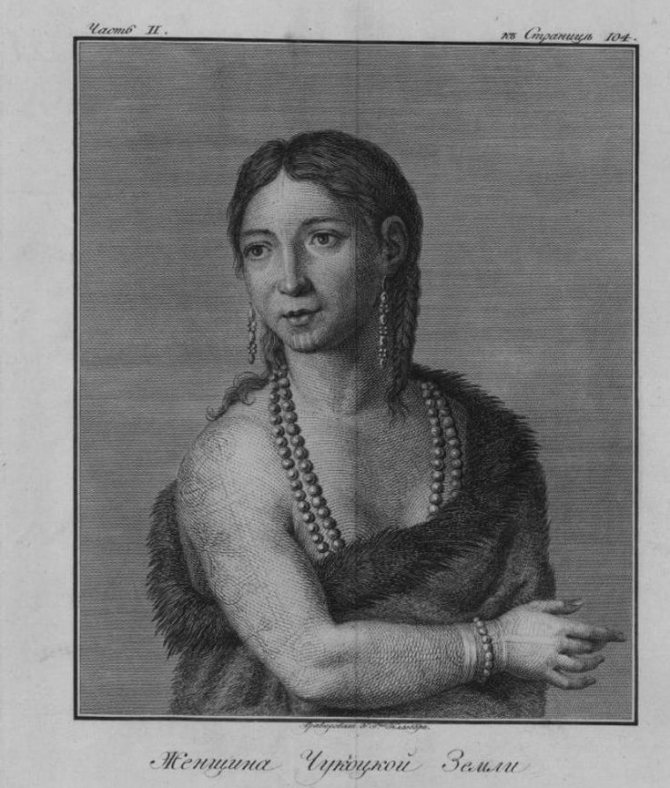

"Woman of the Chukchi Land. Engraving from the atlas of the Billings-Sarychev expedition © Pushkin State Museum of Fine Arts
The earliest exhibit in this section is an atlas of the Billings-Sarychev Expedition from 1785 to 1793. This expedition was organized as a response to the third voyage of the English navigator Cook, who reached the northern regions of the Pacific. The Billings-Sarychev expedition lasted more than eight years and managed to collect a huge number of artifacts related to the culture and traditions of the northern peoples. One of the members of the expedition was Luka Voronin, an artist and graduate of the Academy of Fine Arts in St. Petersburg, who sketched the natives who came across the Russian sailors on the way. The drawings were later used to make engravings that were published in an atlas.
One of the engravings shows the "Woman of the Chukchi Land," as she is signed in the atlas. In the 18th century, there was no clear distinction between the various peoples of the North; they were all conventionally called "Chukchi. There were settled and settled Chukchi. The sedentary Chukchi lived by fishing, while the settled Chukchi were nomadic Chukchi. Today, sedentary or maritime Chukchi are called Eskimos.
According to the tattoos on this woman's body, you can tell that she is not a Chukchi, but an Eskimo. Similar tattoos adorning her face - chin, cheeks, and arm - can still be found today on St. Lawrence Island, which is located between Chukotka and Alaska. St. Lawrence Island tattoos are among the most elaborate and ornamental in the entire northern region, covering large areas of the body. Tattoos placed on women's cheeks were meant to bring her fertility and promote the continuation of her lineage.


A resident of Chukotka with tattoos on her face. Photo by Dmitry Babakhin © Pushkin State Museum of Fine Arts
Another interesting exhibit is a photo of an elderly Chukchi woman, she is still alive today. You can see the traditional tattoos on her face. The photo was taken by the St. Petersburg tattoo artist Dmitry Babakhin. Being not only a practicing master, but also a researcher of tattoo history, he organized an expedition to Chukotka, during which he photographed the last bearers of the female face tattoo. There are only four of them left, they are over 90 years old, they don't even remember what they mean or why they were tattooed, because it happened 70-80 years ago. The real meaning of these tattoos can be explained by anthropologists: they indicated a fairly high social status and belonging to a certain tribe.
Tattoos of Miklukho-Maklai
Several exhibits are connected with the name of Nikolai Nikolaevich Miklukho-Maklai. The famous Russian ethnographer studied the peoples of Southeast Asia and Oceania. He was particularly interested in the Papuans inhabiting the northeast of New Guinea, and a section of the northeast coast of the island between Astrolabe Bay and the Huon Peninsula is named after him.


Tattoos drawn by N.N. Miklukho-Maclay on the south coast of New Guinea © Pushkin State Museum of Fine Arts
In the winter of 1880, Miklukho-Maclay spent several days in a village on the south coast of New Guinea, in the village of Karipuna. He researched all the customs of the people, including the tradition of tattoos that were applied to women. Most of the time, the local tattoos communicated origin and social status as well as protection to the wearer. Having made many sketches, he felt that this was not enough to fully understand this ritual, and achieved that several tattoos were applied to him himself. Miklukho-Maclay described the process as follows: first the drawing was applied to the skin with a stick of pigment, and then it was stabbed.
Tattooing was an important part of the culture of the south coast of New Guinea. Girls began to be tattooed at a very young age, first the outer surfaces of the palms and forearms were covered with drawings, then the face, lower abdomen and by puberty the girl was covered with tattoos entirely, from head to toe. Sometimes the distinctive features of the entire family to which a girl belonged were reflected in the tattoos, for example, if her relatives were particularly fortunate fishermen or warriors, it was also reflected in the drawings on her body. Without tattoos a girl could not expect to marry.
From Nora Hildebrandt to Anna Gibbons
Historian Margot Mifflin called Nora Hildebrandt the mother of all tattooed circus girls. Hildebrandt began her career in 1882 at the Bunnell Museum in New York. According to her, she was captured with her father by Indians in the Wild West. She claimed that her father tattooed 365 images on her arms, legs, and chest under threat of death. After a while, Nora Hildebrandt was eclipsed by nineteen-year-old Irene Woodward, who had 400 tattoos. By the 1940s, tattoo artists, as well as abundantly tattooed people, had become a very common phenomenon at American fairs.
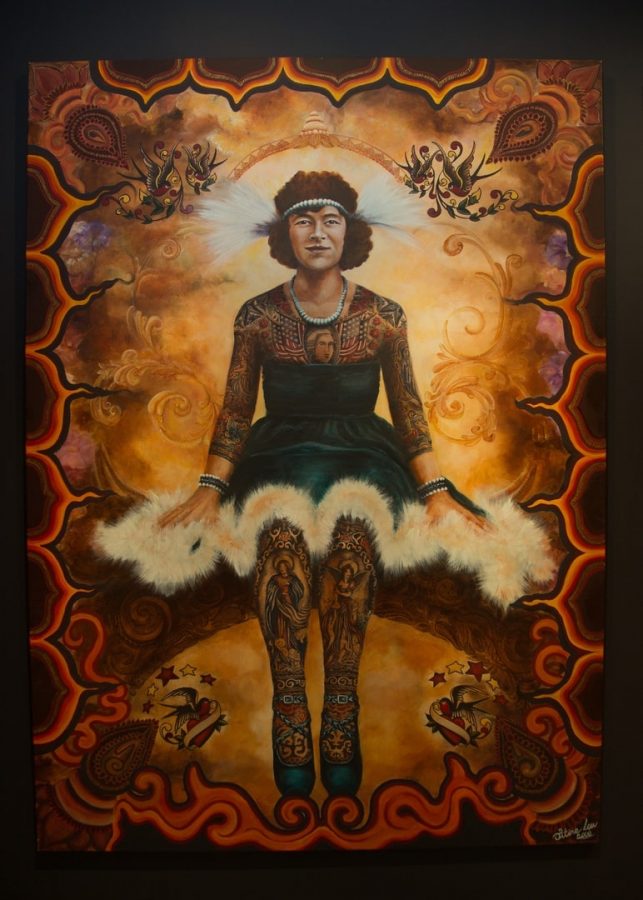

Titin K. Liu. Anna "Artoria" Gibbons. From the series "An Omen to the Great Figures of the Tattoo World." Switzerland, 2000. Canvas, acrylic. Collection of the author, Switzerland © Pushkin State Museum of Fine Arts
The legendary Artoria (Anna Gibbons) asked her husband Charles Gibbons to cover her body with tattoos in order to more effectively advertise the artistry of his creations. According to their daughter's recollection, by the time her mother got her first tattoo, the Gibbonses had already been married for about four or five years. Artoria herself claimed to have run away from the farm with the itinerant tattooist Gibbons in her youth to begin a career as a tattooed woman. After Charles lost his sight in an accident in 1946, his wife began appearing on Dell Traverse's "Ten in One" show as a tattooed woman.
Russia
In Russia, tattooing also developed for a long time within closed communities, becoming most prevalent in the criminal environment. By the end of the 20th century the ubiquitous presence of criminal tattoos among members of this world gradually waned, prisoner tattoos became part of the international style and the semantic boundaries of the images became more fluid. The exhibition will feature photographs by Sergey Vasilyev, who visited places of detention in the 1970s and 1990s, recording the tradition of Russian criminal tattooing in all its diversity.
At the end of the 20th century, tattoo masters introduced the term "tattoo-artist," thereby transferring their work from a craft dimension to an artistic one and rejecting the distinction between "high" elitist and mass art. Having developed its own visual language, tattooing gradually moved beyond closed systems and became part of contemporary culture.
You can also take virtual tours of the exhibitions on the magazine's website:
Hof van Busleiden: a guide to the Burgundian palace in the Belgian city of Mechelen "Kalyazin. Frescoes of a flooded monastery": a guide to the exhibition in the A.V. Museum of Architecture. Shchusev "Gifts" in the Russian Museum: guide to the Soviet painting of the second half of the 20th century "Prototype": guide to the project of the future Sergey Kuryokhin Museum "Gifts" in the Russian Museum: guide to the Soviet painting of the first half of the 20th centuryMedical Service of the Red Army: A guide to the exhibition at ROSPHOTO "Dress as History": fashion in the paintings of Russian artists of the 20th century with comments by the Museum of Fashion "Gifts" at the Russian Museum: a curator's guide to the Benois Corps "Fashion for the Russian: a guide to the exhibition "Alexander III. The Emperor and the Collector" in the Russian MuseumFrom Shishkin to Malevich: masterpieces of the Krasnodar Art MuseumExcursion in the House Museum of Peter Paul Rubens in AntwerpFrom Dürer to Matisse: exhibition guideAlexandrine Theatre: tour in the Museum of Russian Drama "Romance and zeal. Contemporary Art of South Korea": guide to the Hermitage exhibition "Van Eyck. Optical Revolution": guide to the exhibition in Ghent "Studio 44. Anfilade": guide to the exhibition in the General Staff Building "Laboratory of the Future. Kinetic Art in Russia": guide on "100 Photos" exhibition by Anatoly Boldin at ROSPHOTOIranian Art at the Museum of Oriental Art "EXIT" by Igor Novikov at the Moscow Museum of Modern Art Karl Faberge Easter Eggs: masterpieces from the Faberge Museum
Tags: Pushkin State Museum of Fine Arts Tattoo exhibition
Tattoo in Russia
In Russia tattooing for a long time developed within the closed communities, getting the most prevalence in the criminal environment. By the end of the twentieth century, the tattoo of prisoners had become part of the international style and the semantic boundaries of the images more fluid.
Video at the opening of the TATU exhibition
The exhibition will feature photographs by Sergey Vasilyev, who visited places of detention in the 1970s and 1990s, capturing the tradition of Russian criminal tattooing in all its diversity.
What tattoo conventions and small themed festivals do
The festival can be organized by anyone: from a large company with tattoo staf or special industry products to an enthusiast who has caught fire with the idea. The only question will be whether a newcomer to the field will be able to attract distinguished masters in the jury and a large number of tattooists to participate.
There is no normative legal acts or really existing Guild of tattooists. Therefore the organization of action, an estimation of works and delivery of "regalia" occurs exclusively on subjective perception of the ringleader and an estimation of the invited judges.
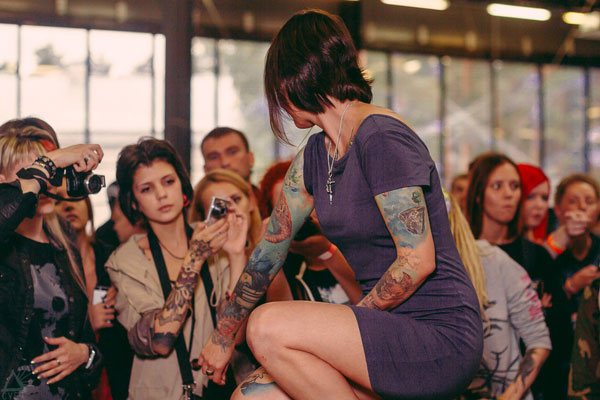

Fests last, as a rule, for one to three days. It is clear that all such gatherings revolve around the topic of tattooing, so they are engaged in everything that can only be associated with a body drawing:
- They have battles among their sketches;
- they exhibit finished works on models for the general competition (for the objective approach the jury does not know whose artwork is evaluated, because the names of artists are kept secret until the results are announced and awards are handed out);
- demonstrate their skills to a large audience, holding another tattoo session right in the festival area;
- "bisons" of tattooing share their skills with beginners and just interested artists;
- sell and buy all kinds of goods, directly or indirectly related to the art of tattooing.
A well-organized festival is a very soulful place. Tattoo artists gather here not as competitors, but as friendly comrades. They meet old acquaintances, share experiences, socialize, and work to promote themselves. In many cases, the buzz of the machines is accompanied by fun events with musicians, custom clothing stores, stickers, cool equipment, and other handyman gadgets.
The annual festivals serve as a kind of summing up place. There you will see not only long-known and popular styles, but also various experiments of bold pioneers.
Tattoo of our time
The Pushkin State Museum of Fine Arts will present at the exhibition "Tattoo" works by Belgian Wim Delvoie and Italian Fabio Viale.
At the end of the 20th century, tattoo masters introduced the term "tattoo artist," thereby transferring their work from a craft dimension to an artistic one and rejecting the distinction between "high" elite and mass art. Having developed its own visual language, tattooing gradually transcended closed systems and became part of contemporary culture.
In choosing tattooing as an artistic technique, Delvoie and Viale draw upon a broad range of embedded socio-cultural meanings and the associations it evokes. Italian sculptor Fabio Viale works with noble Carrara marble. Reproducing the ancient sculptures, Viale covers their snow-white surface with drawings of Russian criminal tattoos as well as Japanese-style tattoos.
Three sculptures by Fabio Viale and twelve works by Wim Delvoie will be on display.
Good Tattoo Fest in Moscow
I've been dropped off again at the Moscow Tattoo Festival.. This is the 17th time it's been held in the capital, but this is only my second time here.
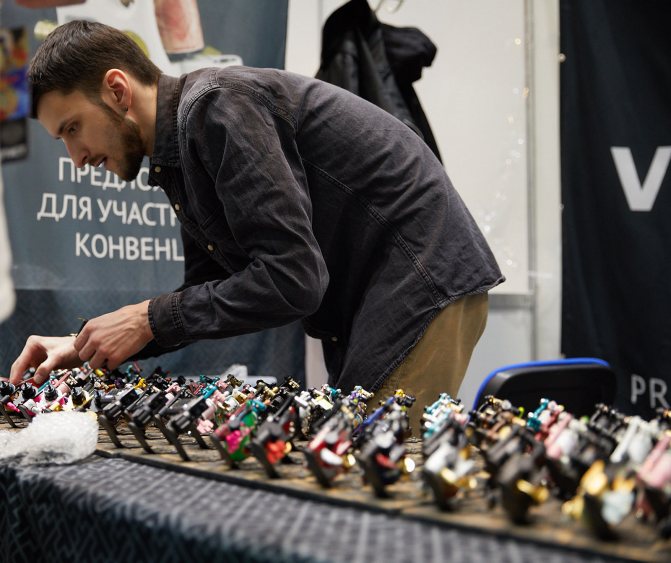

In general I cannot say that there was anything unexpectedly new compared to last year's festival. Except that the scale is more modest, the people are smaller, the feeling is more comfortable.
Why do people go to such events? To show themselves, to look at others. Mostly, of course, the first. Therefore visitors here, as a rule, with a very bright and creative appearance. It is like an old circus: interesting, eyes are diverted, everything is so colorful and attractive, lots of naked bodies, and everyone is smiling.
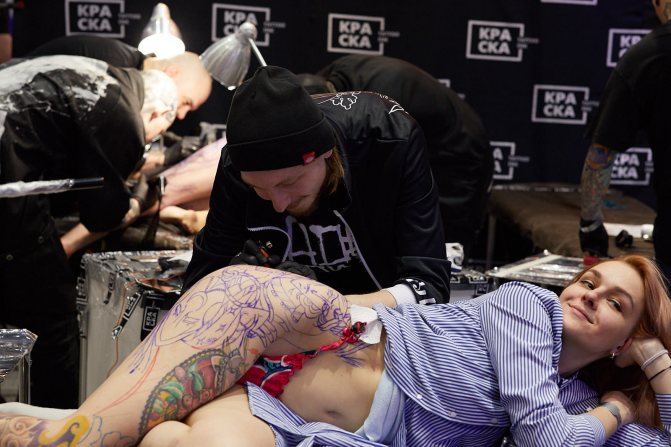

The latter, by the way, pleased me pleasantly. The tattoo industry has long ago acquired new representatives, people of a new formation: they are less gloomy, reserved and snobbish, more open to communication and interaction with the outside world. Believe me, I have something to compare it with (I got my first tattoo many, many years ago just at the tattoo-festival). The unfriendliness towards "gawkers", verbosity and a melancholy eye from above - all this is not conducive to a pleasant conversation.
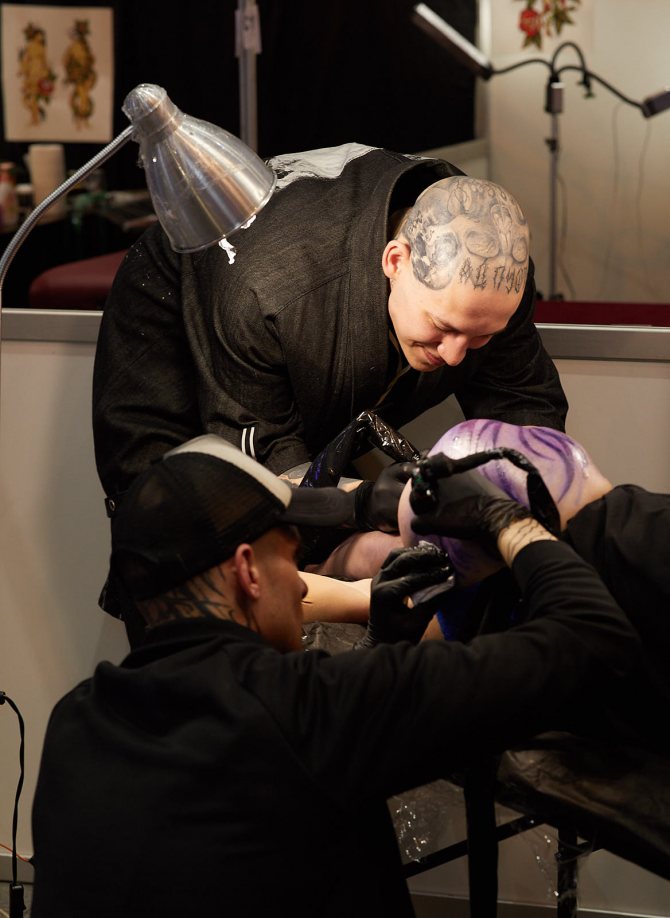

Rather than suffering at such noisy movements, loner tattooists, sociopaths and misanthropists should work alone in their cozy cells. At the festival, the participants were happy to answer visitors' questions about their activities, the work process, and the peculiarities and subtleties of their craft. After all, at the festival also came a lot of masters from the regions of the country and newcomers to learn from more advanced colleagues in the trade.


By the way, for a full-fledged exchange of experience conference halls were allocated, where specialists could discuss urgent issues at a round table. So, as you can see, the Tattoo Festival is quite a solid event. And there is no jackets and ties.
Apart from the masters themselves, the festival presented technical equipment for tattoo artists, all sorts of paints and materials for those who learn this art, and unique and stylish merchandise - from biker jackets to street fashion.


I didn't come to the festival to show off. I was attracted by the action that Grindcore tattoo team had organized - they had chosen one of the three days of the festival for charity. From morning till night they were giving pre-designed small tattoos to anyone for a fixed price. I found out about it in the Festival group. All the money earned from this action, they sent to the fund to help children with organic lesions of the central nervous system. Of course, I couldn't pass by such an event and not participate. Especially since I noticed these guys back at last year's festival.
Mikhail Strogiy, who had my skull tattooed on my leg, told me about other similar events held by various tattoo studios. The guys liked this endeavor and decided to get involved. So this phenomenon, I hope, is really starting to gain momentum in the tattoo community. And it's very cool!
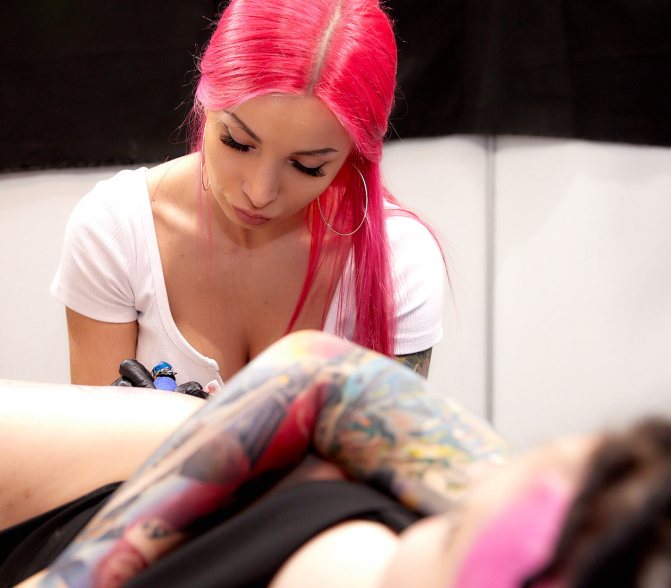

Grindcore tattoo studio specializes in the realistic thrash-polka style. I learned about it in the early days of my tattooing hobby, back when my body was pristine. And I fell in love! Oh this combination of red and black... I can't imagine why before this skull on my skin never happened a single tattoo in thrash-polka.
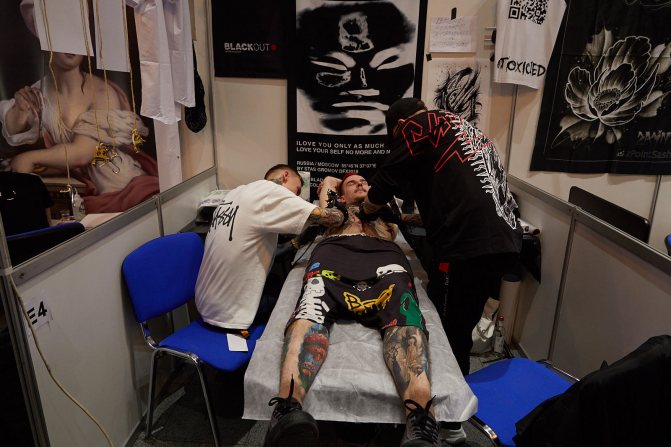

This style was invented by, as you can guess... the Germans! In addition to the contrasting combination of colors, it is characterized by a contrasting combination of pictorial techniques, from realism to abstraction and geometry. This is because the style was based on collage, clippings from newspapers and magazines. And then artistic expression was added to it.
And although the original realist thrash-polka carries a grim essence, imbued with social problems, challenges to society, dirt and blood, in our country it has undergone a strange change and somehow turned into a patriotic (read: militaristic) poster, which I do not like.
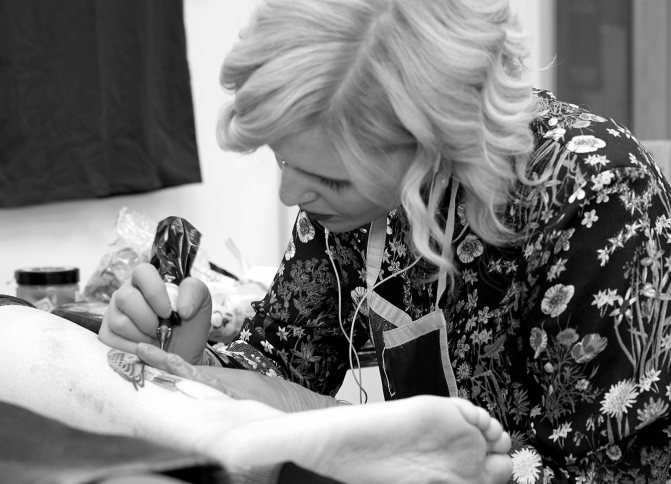

But back to the Moscow Tattoo Festival itself. In order not to bore either themselves, the participants or the visitors, the organizers develop new intrigues - that is, they come up with new nominations. In addition to the traditional awards for the best tattoos performed at the festival itself, as well as the selection of winners in a particular style, where everyone can participate, regardless of when their tattoo was done, there were nominations for the best sketch, as well as "New Name". And the latter, in my opinion, was absolutely deservedly won by the work of Daria Baver.
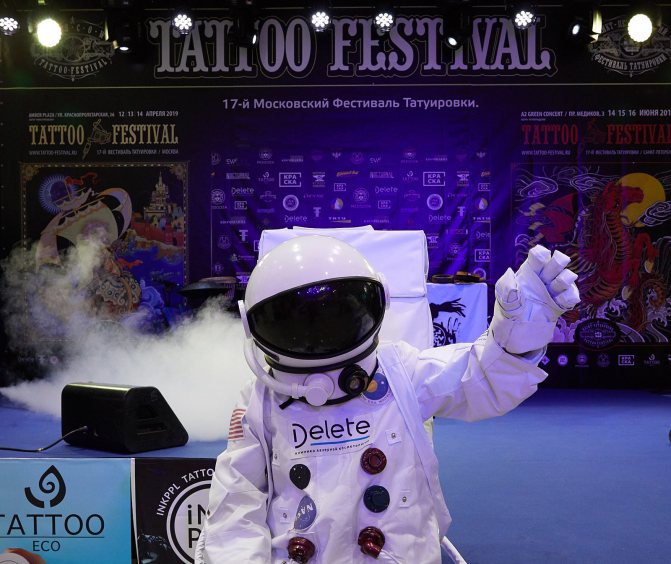

Again we were amused by the nomination "Partak of the Year": the feeling is that some people make some outright horror on purpose, so that they can perform it on the Festival stage and fight for the prize - free removal. Yes, by the way, at the festival you could not only get a tattoo, but also get rid of it (or at least start). And it is quite an impressive spectacle: how literally in a couple of seconds a tattoo disappears behind the blistering burn resembling foam from a fire extinguisher. Measure twice and cut once, but how many of us think about that when we get our first tattoo on the cheap? The "victim," who got lasered before my eyes, shared that it didn't hurt that much, because it was quick.
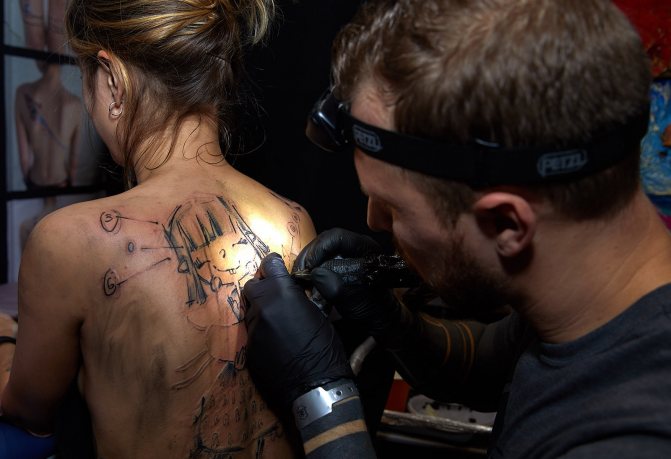

It was nice to meet old acquaintances at the festival. Alexei Platunov set up a real show near his corner! A crowd of paparazzi gathered there to watch the Artist create on an almost completely naked girl in real time, here and now creating graphic harmony with a wave of his brush.
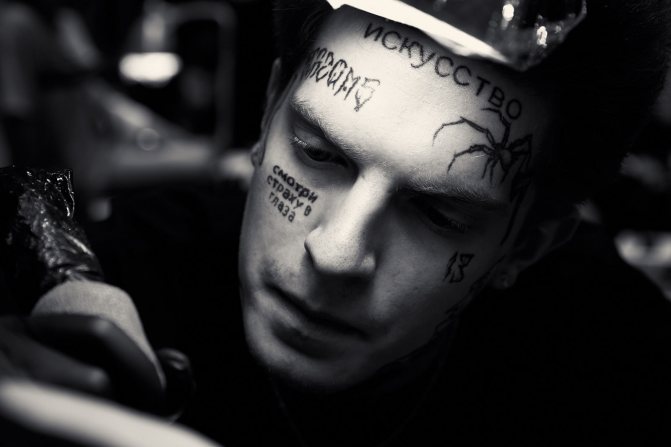

By the way, his epathetically decorated box also saw charity flourish. In conjunction with the tattoo studio "Good Work," there was a collection of donations to help the animal shelter. And that's a really good job.
But the main thing I attend such events for is new faces. Because where, if not at the Festival, should all the most advanced, bright and innovative be gathered? This time there was an unreal number of tattoo masters from different cities (now it's fashionable to look for feminine words, so, apparently, we should write tattoo masters?). It seemed to me that their number outweighed the male part.


New faces aren't just new experiences and a new word in tattooing. It's a bookmark for the future. For example, someone, like me, goes to events like this to explore the "range." If you're not a ubiquitous Vegan Dj, whose main purpose - to party, then spend your time in a useful way and find among the participants of the master for his new tattoo. I found one this time, too! Scratching my healing skull, getting ready for more pain.
Kings and Madmen
The first tattooed king was King Charles XIV of Sweden, Johan, a former Napoleon Marshal Jean Bernadotte. The inscription on his body read: "Liberty, Equality, Fraternity. Death to Kings!" Nicholas II returned from a voyage to Japan with a tattoo of a dragon, later his chest was decorated with a tattooed sword and his arm with his wife's name.
Tattoos are still in fashion. Now they are easier to get rid of: there were pigments that fade in a few years, tattoos removed by laser and chemistry.
People are proud of tattoos, people are ashamed of them, they have become a small industry and are a part of our everyday culture - and the Pushkin State Museum of Fine Arts has every reason to consider them a part of our civilization's history.
The exhibition runs until May 31, 2021.
Popular festivals in the world and tattoo events in Russia in 2021
The most popular tattoo festivals in the world are held outside of Russia, namely:
- U.S. (New—York Tattoo Convention) - The most famous and oldest convention, which has already existed for 17 years.
- United Kingdom (London Tattoo Convention) - one of the largest. It has been in existence for 11 years and provides an opportunity to get acquainted with absolutely all the styles that are represented by the masters today, in their best performance.
- Netherlands (Amsterdam Tattoo, Art and Street Art Convention) - A festival that brings together people whose lifestyles involve tattoos. Paintings, sculptures, graffiti and other art forms are also represented.
They are all attractive and original in their own way. But Russian festivals are trying to keep up with them in scope and at the highest level embody the idea of tattoo art. If you are interested in the subject and would like to visit the upcoming convention in Russia, here is a current list of upcoming major events in 2021 (Moscow and St. Petersburg):
9th International Moscow Tattoo Convention.
2, 3, 4 June 2021 in Sokolniki Exhibition and Convention Centre, pavilion 4.
https://moscowtattooconvention.com
15th St. Petersburg Tattoo Festival
9, 10, 11 June 2021, location to be specified
https://www.tattoo-festival.ru/spb/
Moscow Tattoo Festival
March 31, April 1, 2, 2021 in Business Krasoproletarskaya str.
https://www.tattoo-festival.ru/msk/
Siberian Tattoo Festival
August 18-20, 2021 in SC "North" located in Sosnovy Bor, 61 Uchitelskaya St.
https://en.tattoofest.su


